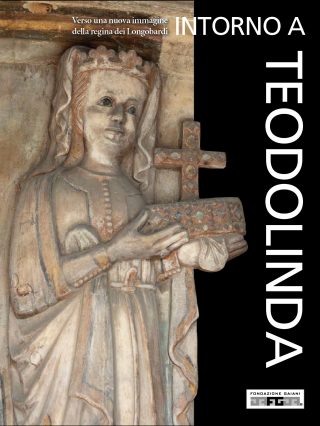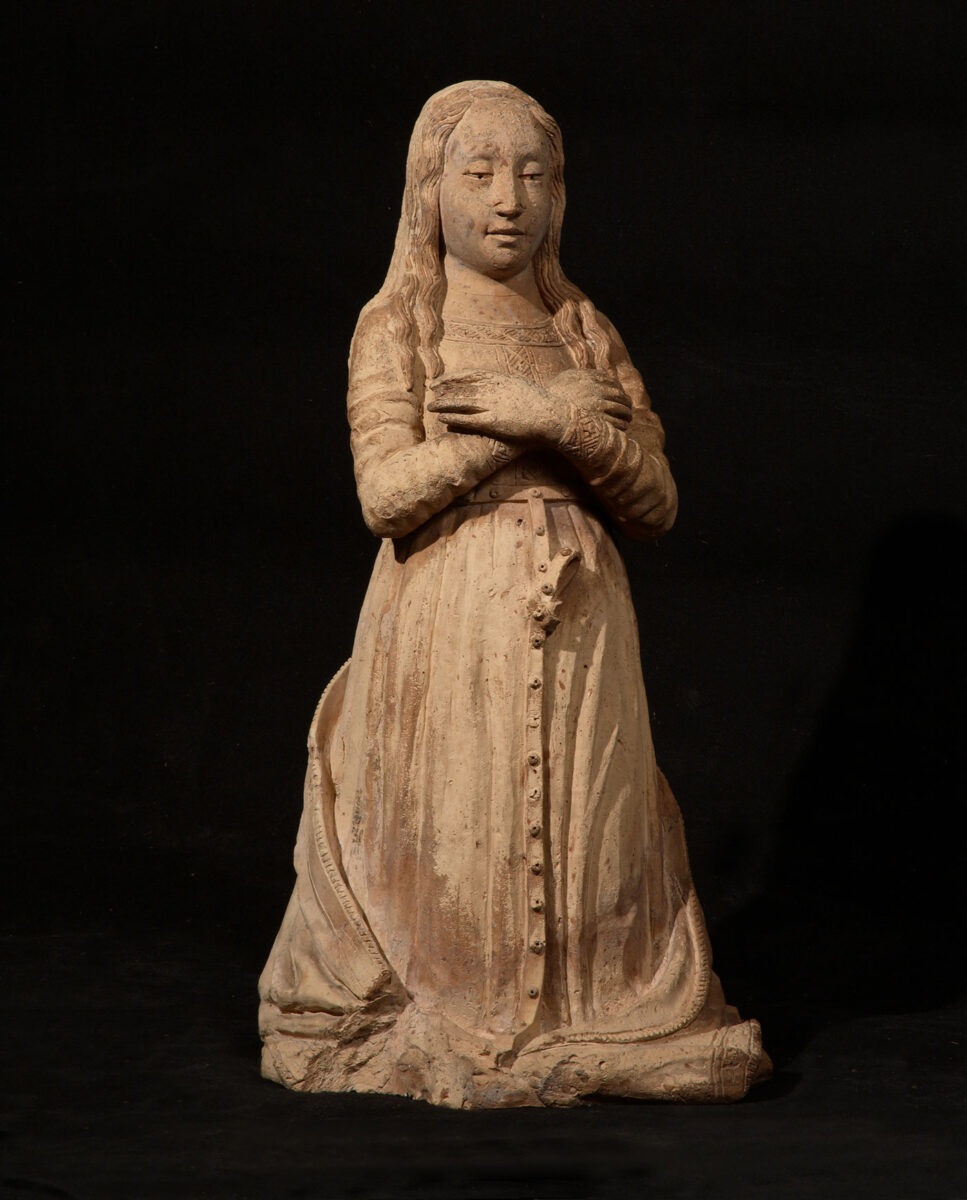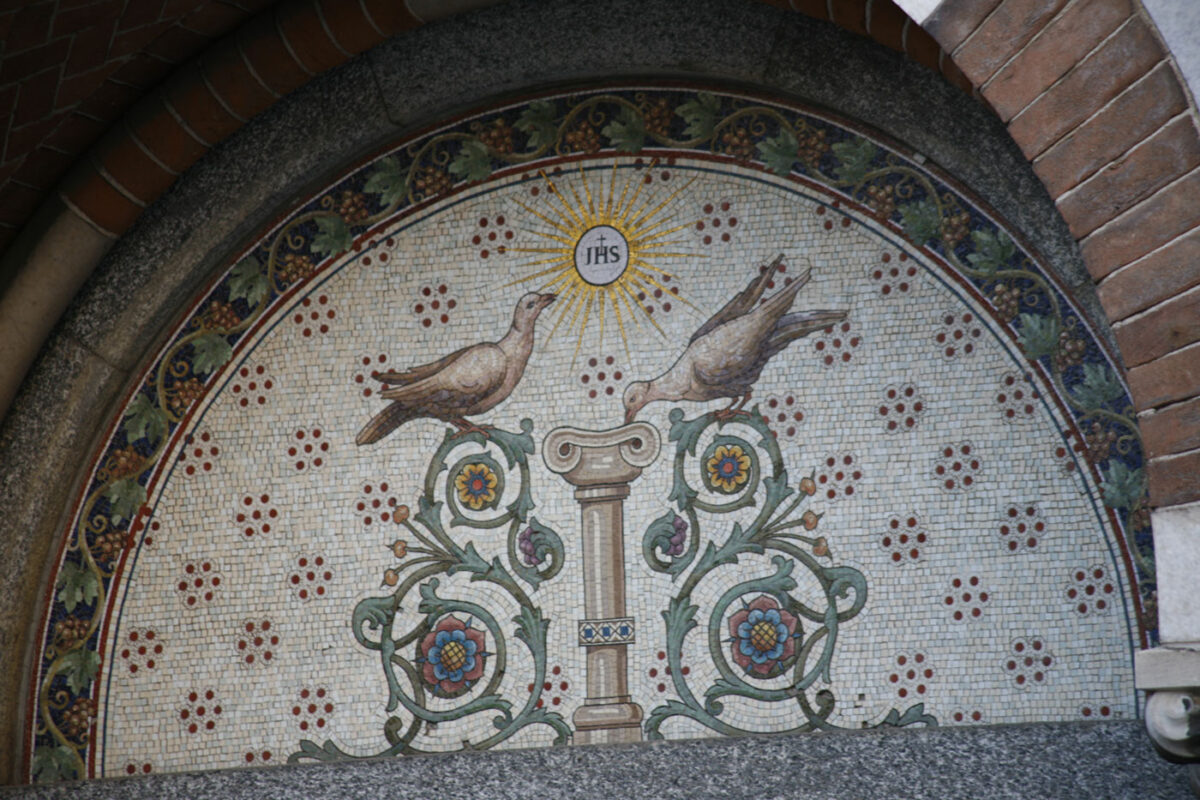Built in the first half of the fourteenth century in sober forms of Cistercian matrix, the Dominican church of San Pietro Martire was attached to a convent, already founded in 1280, which was the seat of the court of the Inquisition.
Both the exterior and the interior with three naves were restored at the beginning of the twentieth century to recover its original layout. There are numerous fragments of frescoes from the first half of the fourteenth century, referring to Lombard painters influenced by the language of Giotto.
From the outer wall of the apse, where they were perhaps walled in 1817, come the remains of a fine terracotta polyptych now at the Museum and Treasury of the Cathedral of Monza, probably originally intended for one of the altars placed inside.
Next to three fragments of the frame and two panels with busts of saints, there are four elements of larger dimensions, identifiable with as many compartments of the single order of the ancona.
Within niches crowned by classical shells, there are modeled in high relief the saints George (or Michael), Paul, John and a holy monk (perhaps Peter Martyr), which despite the diversity of types, are united by the performance strongly contrasted of the banners, the nervous incision of the features and the rich, overflowing decoration of the frames.
These characters allow us to date them to the sixth decade of the fifteenth century and to attribute them to a Lombard master not yet identified, author also of other valuable pieces, including a polyptych preserved in the parish church of Mozzanica.
To the same author, but not to the same group, also belongs a beautiful kneeling Madonna. Perhaps relevant to another polyptych of the same building, it is noted for the elegance of the pose and the evidence given to the belt, which also here could refer to the cult of the Madonna della Cintola.










